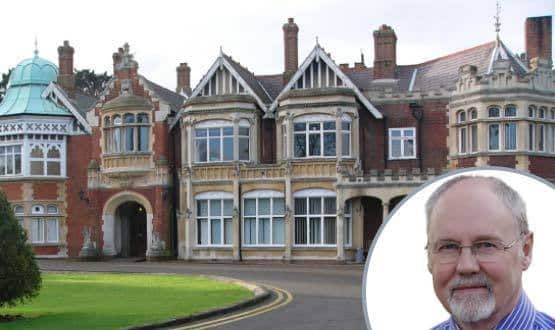I live just 14 miles from Bletchley Park, the home of the codebreakers in the Second World War, and the birthplace of the first electronic computer, Colossus. If you’ve never been, do visit: it’s great day out!
I go there quite frequently – possibly hoping that some of the vibes will rub off. Had I been around during the war, I’d have wanted to have worked there.
Codebreaking itself is far too abstruse and mathematical for me; my real interest is in the psychology behind it all – and what a lot there was!
Breaking the unbreakable
It isn’t widely realised that the Enigma machines that the Germans used to encrypt messages were essentially unbreakable; the computing power required to crack them made them more or less invincible to a ‘brute force’ attack.
That is, they were unbreakable without ‘cribs’ (clues as to what the encrypted messages themselves might contain) or some inkling of the settings for the Enigma machine that day (including any additional settings that individual operators might have chosen).
A huge amount of the decryption process revolved around these things; especially the ‘Cillis’ (alternatively, but incorrectly, known as ‘Sillies’), where signal operators cut corners, or chose easy to guess personal parameters.
(Think how so many people today choose passwords today. Your initials, your telephone number, ‘Pa55w0rd’, the name of your wife, your children, your cat…)
That’s where so much of the psychology came in: obtaining cribs from the many formulaic messages sent by the Germans (such as weather reports); or getting inside the minds of the operators, especially when they were under pressure, tired or lazy (or didn’t realise that precise instructions had been given to them for a reason).
Traffic analysis
I recently read Gordon Welchman’s book, ‘The Hut Six Story: Breaking the Enigma Codes’.
At a time when the Nazis had made Enigma more complex – and so blacked out, for many months, the Allies’ ability to decrypt it – Welchman explored what could be deduced from the information contained in the meta-data of the encrypted messages.
He was able to infer huge amounts from where these messages were sent, when, and how frequently.
Eventually, he could identify such things as that a particular pocket battleship was about to leave harbour, even if the codebreakers couldn’t read the actual content of the messages.
(This discipline is now called ‘traffic analysis’: think of it as ‘non-verbal communication for codebreakers.)
Welchman made many other important contributions, especially to the background organisation of Bletchley Park’s operations. He continued in this area after the way, eventually joining the MITRE corporation in the US.
He originally published his book in the 1980s, and has his US security clearance revoked as a result. In fact, he was nearly prosecuted because some of the material he discussed was still considered to be classified, even forty years on.
Decrypting the organisation
When it comes to the present day NHS, it is Welchman’s view of the organisation that is instructive.
Security at Bletchley Park was ferocious: each of the many thousands of workers was expected to keep quiet about their work, even if they were married to a member of the Bletchley Park staff working in a different hut.
While this produced a phenomenal level of protection, on many occasions it operated significantly against the codebreakers’ interests: staff became focused entirely on their part of the job and on nothing else.
Yet particular individuals often had insights and knowledge that could have been helpful to others, if only they had been allowed to share their ideas; or if they had realised that a wider need existed that their expertise could fill.
Welchman’s particular genius was in taking a step back, seeing the bigger picture, and then setting up organisational mechanisms that would allow the efficient integration of the cryptographic process.
I’d say the NHS is in much the same situation: uncertain overall strategy; siloed institutions and workers; little lateral thinking; not enough integration; and, in the NHS’ case, no uniformity alongside a totally uneven and unfair allocation of resources.
My final decision is ‘probably’…
Do we all know what our overall goals are? Are we sure? Quite incredibly, hardly anyone at the moment seems to know what the Secretary of State for Health is planning for the NHS, other than that he is constantly expecting us to do more with less.
Does Jermey Hunt intend to sell it off? Personally I doubt it. Is he trying to be positively disruptive, shaking the organisation to see if it can realign itself? Possibly; but by the time the realignment occurs there won’t be much of it left and a good proportion of its clinicians will have gone.
What we don’t know, we can’t plan for. Worse, we may well end up busting a gut to get our particular strategies working; only to find ten days later that these won’t fit in with new plans that have suddenly been revealed from on high. It’s a soul-destroying, callous way to treat dedicated staff.
Welchman says that in the best organisations everyone knows exactly the goal of the whole organisation and exactly their personal function within it.
We need to re-learn this today. Otherwise, we’ll end up with a dysfunctional, inefficient organisation with a totally disrupted structure that minimises the expertise of its staff rather than maximising it. And that will apply however bright and dedicated these individuals might be.

